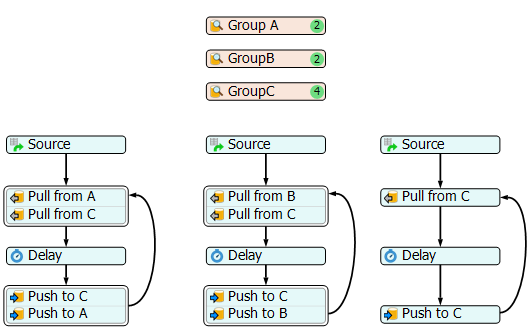I use process flow for all logic.
I have 3 groups and 4 operators:
GroupA= Operator1 & operator2
GroupB= Operator2 & Operator4
GroupC= Operator1-4 (all operators)
My problem is during a process that acquires an operator from GroupC. It will call an operator regardless of whether or not that operator is utilized in a GroupA or GroupB only process. This results in the operator stopping its current process to perform the most recent acquire operation BEFORE he has been released.
I'm wondering if I can use labels to simulate a utilization state and query the label number in the acquire activity...
I have tried a query in acquire activity:
WHERE isIdle == true
and adding the isIdle field in the resource activity. However this did not work; all the operators stopped being acquired at all.
Does anyone have an alternative solution for this?

